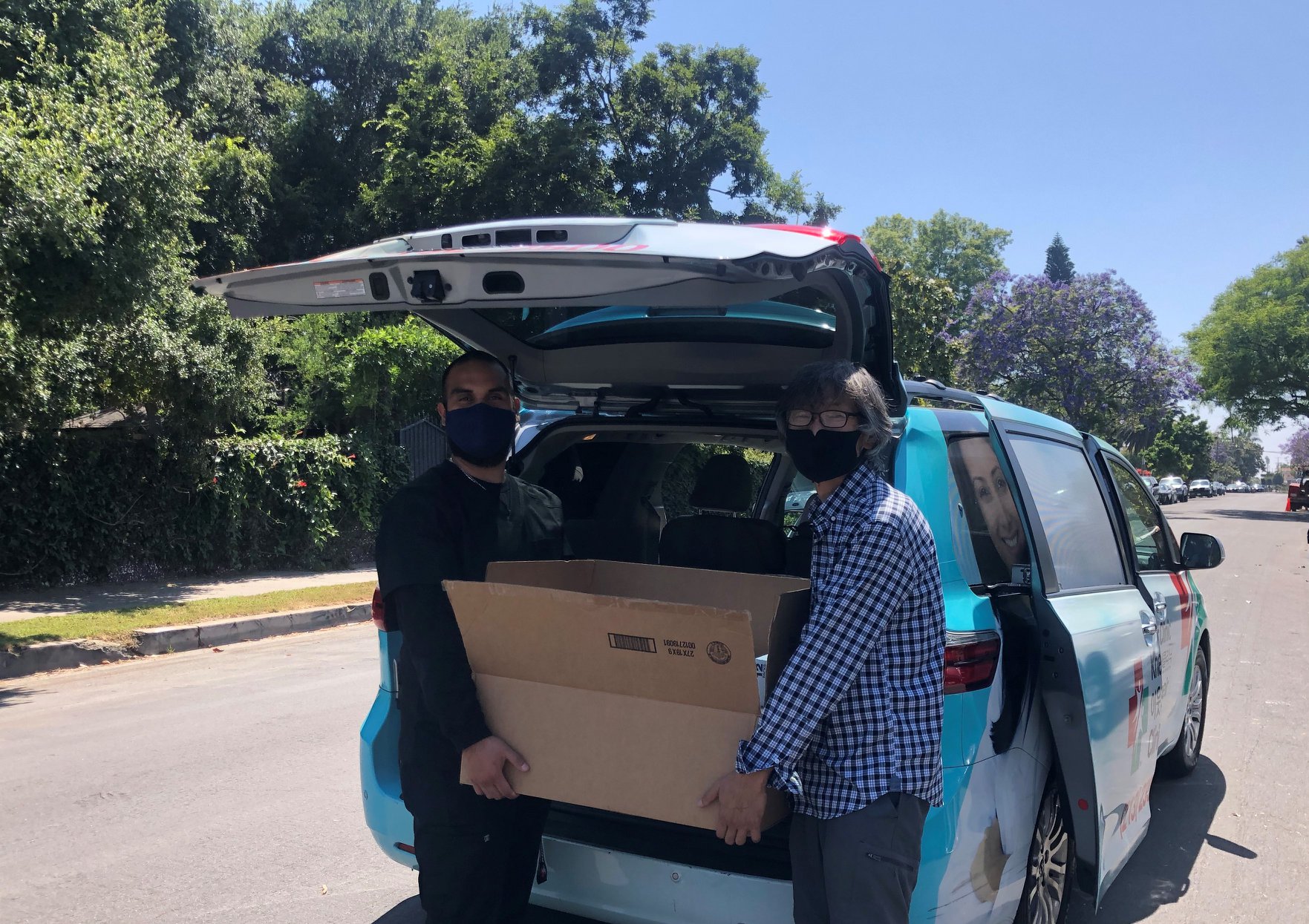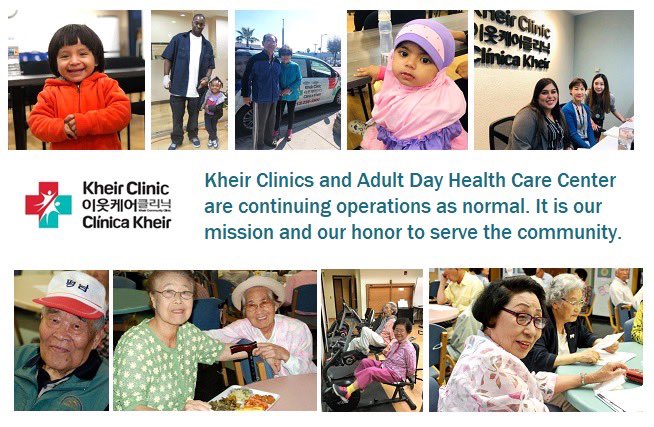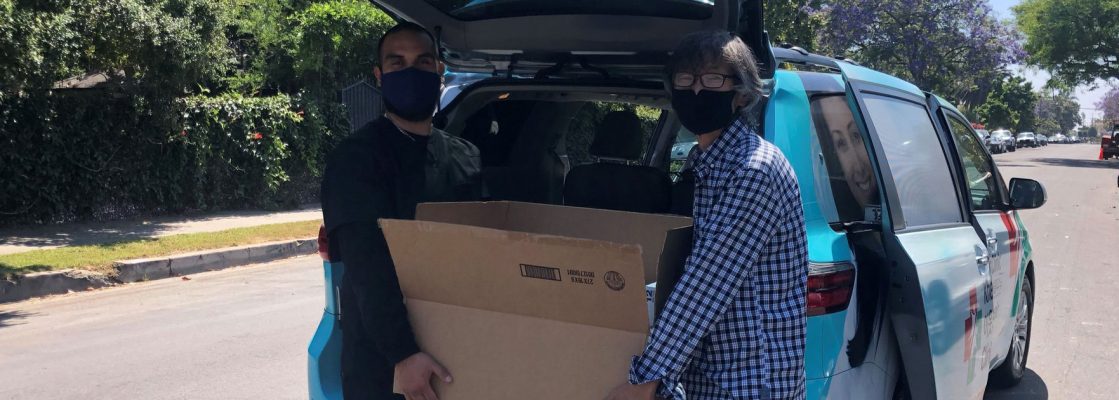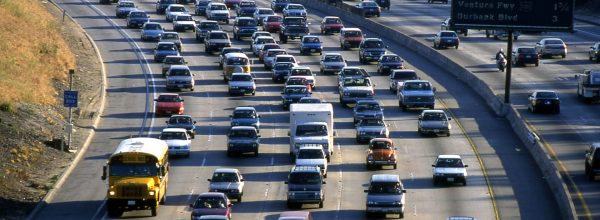
The COVID-19 pandemic has forced safety net health centers to pivot on a dime. When patients stopped going to clinics for routine health care because of shelter-in-place mandates, some started delivering services to patients at home. Case in point: Los Angeles health centers are now transporting medications, food, face masks, and other essentials in clinic vans originally designed to bring transportation insecure patients to doctors’ appointments.
That’s just one of the many ways that participants in Moving Clinics Upstream, a CCI program funded by Cedars-Sinai, have responded to pandemic challenges. Moving Clinics Upstream was originally designed to address top patient health concerns, specifically transportation and food insecurity, by going beyond the walls of these safety net health centers. At first, four clinics from the greater L.A. area — Clinica Romero, Kheir Clinic, Planned Parenthood Pasadena and San Gabriel Valley, and T.H.E. Health and Wellness Centers — explored solutions such as ride sharing services, public transit financial assistance, and internal van services. But then COVID-19 hit and “stay home” directives are now likely to extend well into the summer. So they have had to adjust to the current climate by bringing health care to their patients — both literally and virtually.
Perhaps the biggest adaptation is an abrupt ramping up of telephone and telehealth services in place of in-office visits. And that pandemic-instigated pivot has had a major impact on removing a big barrier—transportation—for patients trying to access health care services.
Many providers—including those who previously had not offered telehealth services—have moved quickly to introduce the technology as a way to address patient care during shelter-in-place directives, designed to protect the health of both patients and caregivers. This move was fueled by the federal government’s decision to waive telehealth-reimbursement restrictions to allow medical clinics to use connected health platforms and tools to improve access to medical care during COVID-19 emergency lockdowns. At the same time, the California Department of Health Care Services also removed hurdles to providing telehealth and began requiring Medi-Cal managed care plans to pay providers for telephone and video visits at the same rate as in-person visits.
Kheir Clinic
Kheir Clinic in Los Angeles’ Koreatown is now serving around 70 percent of its patients via telephone or telehealth services. Kheir Clinic’s four medical sites serve a predominantly Korean population, as well as native Spanish, Thai, and Bengali speakers. Pre-COVID, the clinic saw around 13,000 patients a year in person and logged more than 60,000 in-office visits.

Before the pandemic hit, Kheir Clinic was already working towards enhancing and developing its IT infrastructure through grants from Health Net, says Kirby Rock, director of external affairs at Kheir Clinic. The clinic’s electronic health records are maintained through eClinicalWorks, which uses healow for its telehealth platform. Since that platform offers a seamless portal account, Kheir Clinic is currently piloting using the software for its telehealth visits. That said, since many of Kheir Clinic’s patients don’t have access to high-speed internet services, or lack access to devices with video capabilities, or aren’t comfortable navigating web-based platforms, the clinic is still doing a lot of appointments through telephone contact, she says. No-show rates have dropped from around 15 percent pre-COVID to about 5 percent since the virus crisis began.
“Our telephone and telehealth services have done so much to increase access to medical care for our transportation insecure patients,” says Rock. “It removes a huge barrier. Even many seniors and low-income patients have access to a smart phone or at least phone service. And our clinic staff tell me they’ve had mostly positive experiences working with patients in this way. It’s a difficult time, but most patients are grateful and compliant.”
Meanwhile, Kheir Clinic is using its van designated for patient transport to provide services to patients at home. It has helped to distribute food boxes to seniors and other Kheir clinic patients. The clinic’s vans (another is used for adult day care services, also currently paused) have distributed more than 100 boxes of food, diapers, and washable cloth masks, as well as 200 hot meals for seniors, as part of a project in partnership with World Harvest Food Bank and Los Angeles City Council member Herb J. Wesson, Jr.
The use of the ride sharing service Uber is mostly on pause for now, says Rock, for obvious reasons.
Of the relatively low number of patients who come in for clinic services currently, only a small percentage require transport, says Rock. Due to social distancing mandates, only one patient can ride in the van at a time and the van receives a full sanitation after each ride, which takes about 30 minutes and includes disinfecting all points of contact. The service is mostly being used by older adults who live close to the clinic right now. “There is a lot of fear and paranoia about even going outside so we are averaging less than 10 rides a week,” says Guevara, who wears a mask and gloves and still assists patients with mobility issues who need help entering and exiting the van. And, of course, he frequently washes his hands.
Clinica Romero
At Clinica Romero, where van service had been focused on serving patients with diabetes, the transport is being repurposed as a pharmacy program to deliver items, including insulin (which must be kept refrigerated so it’s transported with cool packs), high blood pressure medications, and other drugs used to treat conditions associated with diabetes, a chronic disorder that can cause heart, kidney, nerve, eye, skin, and other ailments.
The van is used five days a week and makes 12 to 20 deliveries a day, according to Don Garcia, clínica monseñor (medical director) at Clinica Romero. The number of deliveries has been manageable because of the dramatic drop in traffic in L.A. from stay-at-home mandates. Clinica Romero is a federally qualified community health center which serves a mostly Central American community of immigrants, refugees, political asylees, indigenous people, and other marginalized members of the community. The clinic, which has two locations, usually sees about 12,000 patients a year. About a third of Clinica Romero’s patients have diabetes. Clinica Romero, which purchased a van in March 2020, typically transported around 100 patients a year via Uber Health, prior to the pandemic.
The pilot pharmacy delivery program could be expanded, says Garcia, with more resources, to serve all the clinic’s patients who might benefit from it. That would require additional driver funding, along with money to cover van maintenance, insurance, gas, PPE, and other costs associated with the program. The clinic is now also offering mail order medication delivery through the U.S. Postal Service to all its patients, and provides curbside medication delivery for any patients who are able to drive to pick up pharmacy supplies themselves. The clinic needs funding to cover the additional cost of postage, a curbside kiosk, and a pharmacy technician to staff the program, says its medical director.
As with other safety net clinics, Clinica Romero is collaborating with other community members to distribute food among its vulnerable, food insecure patient population. And, in partnership with Tru Connect, its working to ensure that every low-income individual has access to a telephone and telephone service, which is now crucial for routine health care.
In today’s evolving climate, staff are open to finding different ways to meet patients’ most pressing needs. “Sometimes during a crisis like a pandemic, it forces everyone to be creative, to find new ways to do things, and develop a ‘new normal,’” says Garcia. “Our medication delivery service is an example of that. This is the kind of service that patients have wanted for a long time. I hope this is a service that we can continue to fund and sustain even after the current crisis passes.”


